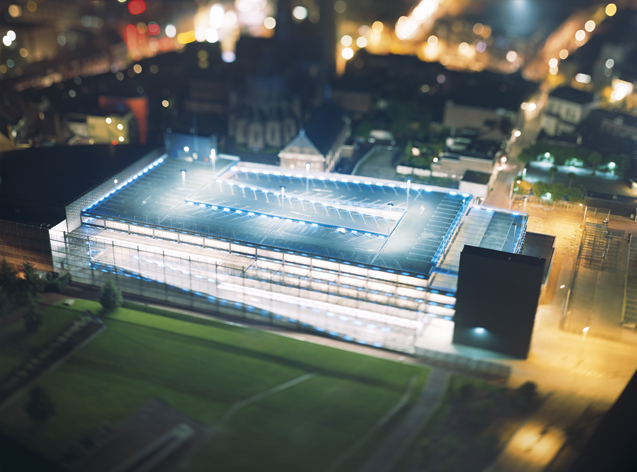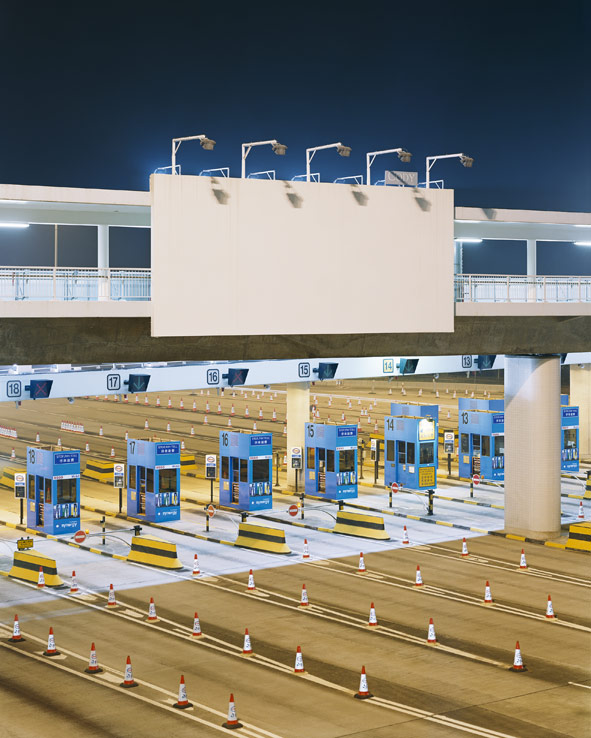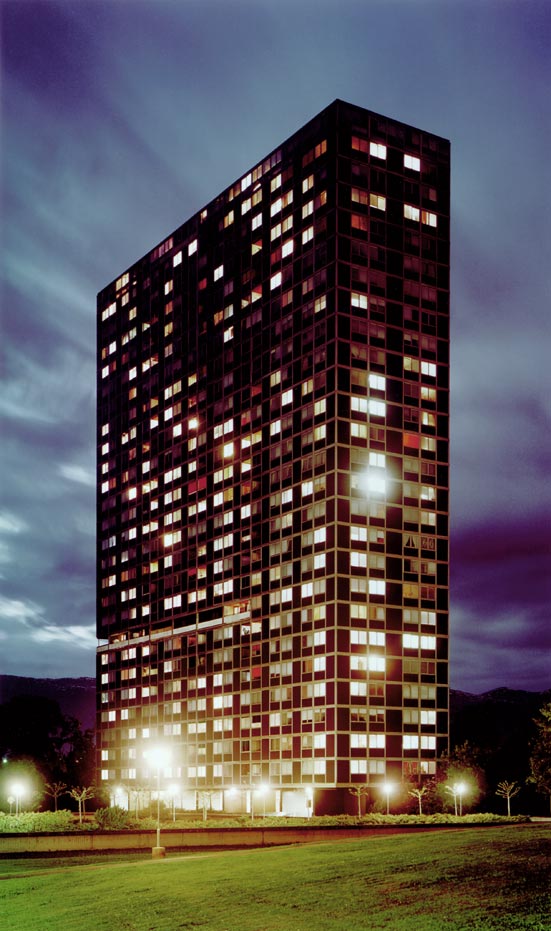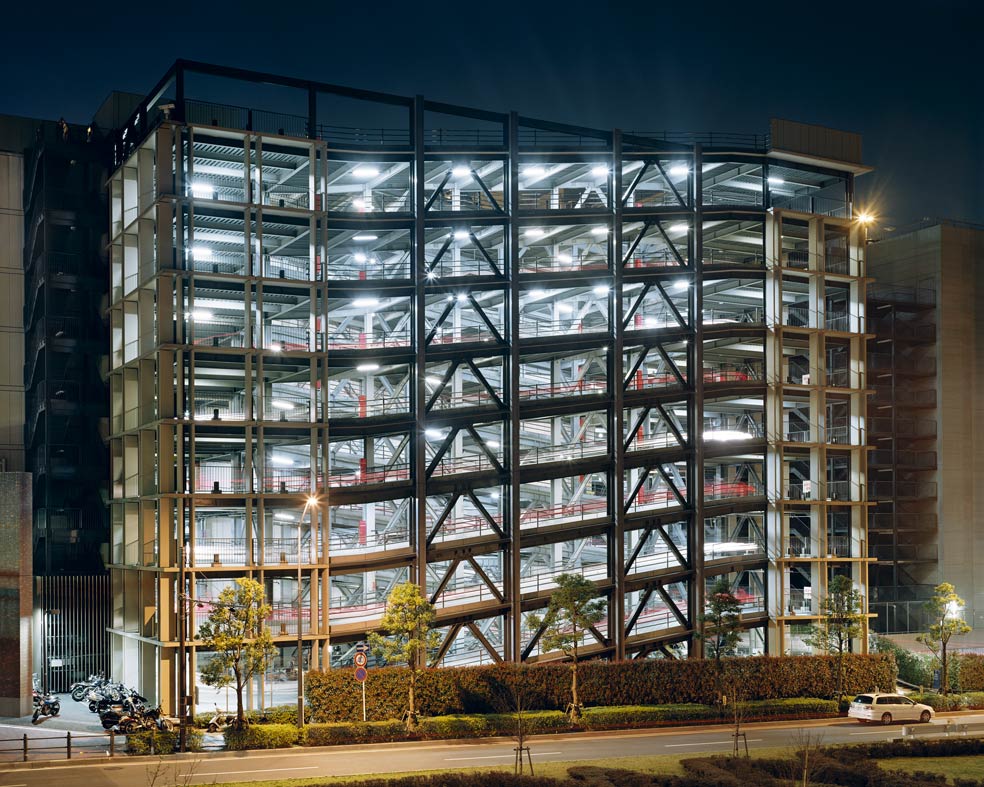
 [Images: ©Frank van der Salm. Sequence (2004) and Square (2006)].
[Images: ©Frank van der Salm. Sequence (2004) and Square (2006)].Van der Salm's work, according to critic Solange de Boer, "has been increasingly influenced since 1998 by other disciplines – ranging from the work of artists like Richard Long, Gerhard Richter and Andreas Gursky to the architecture of Renzo Piano."
De Boer describes the "reality content" of these photos, and how that content "is undermined in various ways – by introducing movement in the image, by alternating focus and lack of focus, his use of color and the role played by light and artificial light."
 [Image: ©Frank van der Salm, Link (2004)].
[Image: ©Frank van der Salm, Link (2004)].However, as impressed as I am by Frank van der Salm's work – and I am – I have to say that most of the essays re-published on his website are almost unreadable.
Art historians – and art critics, in general – are constantly moaning about there being some sort of crisis in whatever field it is they're writing about – say, a remarkably well-funded New York photographer loses interest in her chosen subject matter and so becomes glum and sarcastic at cocktail parties, which gets all her other New York photographer friends depressed about the state of the industry, and so Artforum reports a "crisis" in contemporary portraiture – but the "crisis," if it even exists (and it doesn't – what was all that about fear-mongering in politics...? fake emergencies announced to receive more funding...?), is that it's almost impossible to read about art anymore. He says, stoking the fires of fear.
Instead, an outdated vocabulary with no analytic or practical use gets combined with a weirdly unnecessary check-list of theorists and their books; and, all the while, the general public awareness of art in the world becomes limited to Apocalypto.
Which just means that someone at Yale will declare a "crisis in contemporary cinema," and they'll promptly be awarded a Mellon Fellowship. Thus armed, they spend a whole year outlining their new Horkheimerian approach to cultural discourse theory – which is a field they appear to have invented.
Only then to declare a crisis in it.
 [Image: ©Frank van der Salm, Quarter (2002)].
[Image: ©Frank van der Salm, Quarter (2002)].In any case, while you're on van der Salm's website, reading about the "crisis in landscape" – which was experienced by approximately three people, I believe – click on "Artist," then click on "Text," then click on "Kopsa." You'll soon read that there's "a kind of unspecified specificity" to Frank van der Salm's photographs. Indeed, van der Salm's imagery "relieves the specific" – which only "heightens the impact of the unspecified, the 'artificial', if you will." Van der Salm "shows the specific and the unspecified at the same time, creating from the specific real a (new) unspecified, average."
Apparently, Rosalind Krauss can even prove this.
Having said that, however, Frank van der Salm's images are not "average in the dull sense of the word" – not at all: "they are just the opposite."
And if you're feeling confused while looking at these images, that is because "we see, recognize and understand" what they depict, but we "cannot accept" them. It even seems "as though we are being alienated by the sheer 'logic', by the sheer 'neutrality' of these banal images while our mind incessantly runs around in circles, wrapping itself up in the (to it) irrational equation specific + unspecific = artificial."
I see.
 [Image: ©Frank van der Salm, Loop (2005)].
[Image: ©Frank van der Salm, Loop (2005)].(Frank van der Salm's work first spotted at Conscientious).
No comments:
Post a Comment